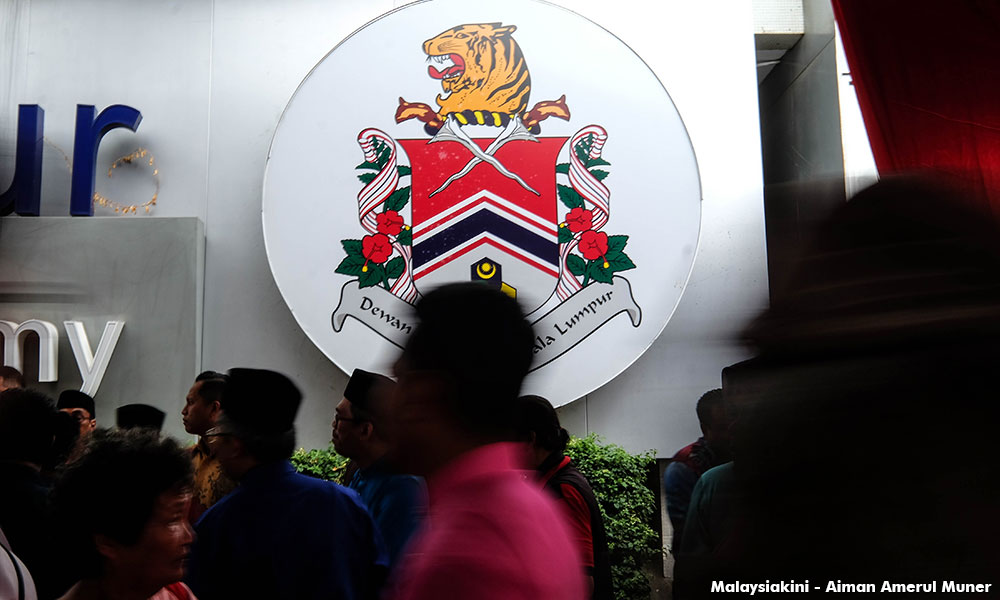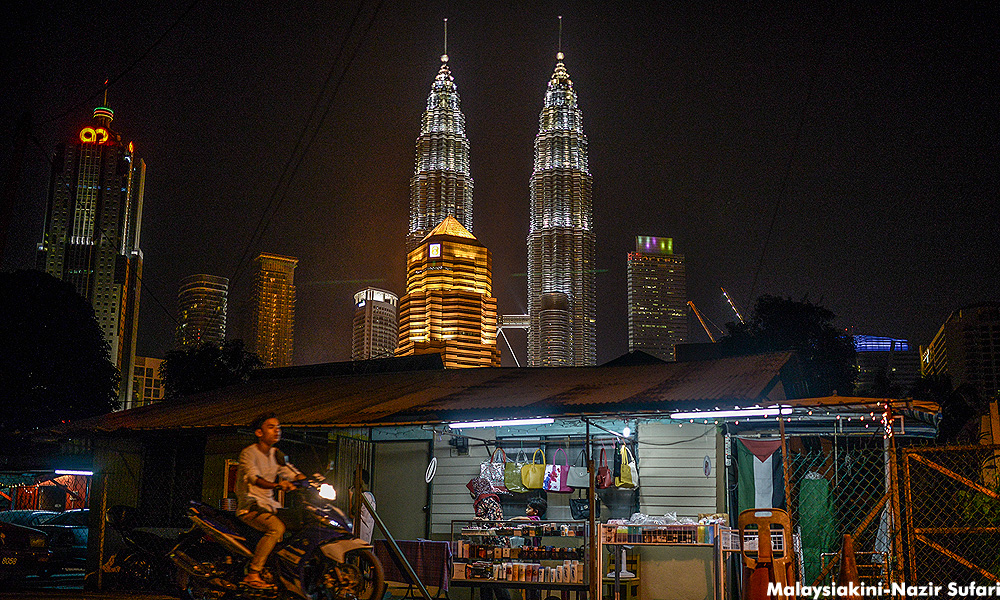Kampung Padang Balang in Sentul has an enviable location as it is only eight kilometres from the city centre but, still, this Malay reserve land (MRL) area is hardly anything like the thriving Bandar Baru Sentul nearby.
Its narrow roads and lanes and haphazardly arranged houses reflect poor planning. It is a pity really because Kampung Padang Balang, one of the few areas in Kuala Lumpur which still has MRL, brims with potential for high-impact development as it is surrounded by good infrastructure, including the Duta-Ulu Klang Expressway (Duke 2)
Other areas in the federal territory with MRL are Kampung Baru, Kampung Datuk Keramat and Segambut.
Spread over 89.8 hectares, Kampung Padang Balang had its beginnings as a Malay traditional kampung which, during the 1840s, was apportioned to a few Malay families.
Today, it has been subdivided into 105 lots and has a population of 6,300 and a total of 1,400 housing units. Besides the families of the original settlers, the kampung is also now home to other Malays who have bought some of the lots and settled down there.
Brimming with potential
Some of the Kampung Padang Balang landowners have sub-divided their lots and sold them to earn some money. Others have created a source of income for themselves by building houses and renting them out to others.
Meanwhile, certain enterprising Kampung Padang Balang landowners who possess larger plots of land, about 0.8 hectare (ha) to 1.6ha in size, have taken the initiative to enhance the economic value of their real estate by collaborating with developers to implement luxury housing schemes.

A survey by Bernama showed that one such project has already been completed while another one is still in the construction stage.
The completed scheme covers 0.8ha and comprises 15 units priced at between RM1.2 million and RM3.3 million each. As the scheme is located in Malay reserve land, the houses can only be sold to the Malays.
The next project will see houses priced from RM700,000 to up to almost RM1 million being built on a 1.6ha tract.
Kampung Padang Balang also boasts a nine-storey apartment building which was completed three years ago and is fully tenanted.
Land issues
Like other Malay traditional kampung, Kampung Padang Balang is also grappling with the issue of multiple ownership of the land grants.
Kampung Padang Balang Residents Association chairperson Mohd Amir Faizal Mohamad Zin said a large portion of the land there did not even have clear boundaries to differentiate the lots.
He said when the kampung was first apportioned, the landowners had family ties but the situation is no longer the same now.
"The original land has since been subdivided into smaller lots and sold to outsiders. An average lot only measures 0.56ha but in order to implement a high-impact development project, one will need to have a minimum 0.8ha plot," Mohd Amir told Bernama.
He said the approval of the individual lot owners have to be sought first before proceeding with any development plan and it is "difficult to get them all to come to an agreement".
Mohd Amir, 54, is among the third-generation members of his family that have remained in Kampung Padang Balang. Many of his relatives continue to live in the same kampung.
Not saying 'no' to development
He is confident of Kampung Padang Balang's development prospects as some of the landowners who embarked on upmarket housing projects were enjoying good demand for their units.
"We (the residents association) have never rejected development as we want to increase the economic value of our land. We are all for it as long as it does not affect our rights as landowners," he said.
Mohd Amir also said that another snag faced by the Kampung Padang Balang landowners is the absence of a proper development plan.
He said 10 years ago, Kuala Lumpur City Hall (DBKL) had drafted a plan to develop traditional kampung, but it has yet to be gazetted.

Only after the development plan for traditional kampung is gazetted can the landowners carry out development in line with the guidelines provided.
"How can we develop our land if the plan has not been gazetted yet? We too want our village to be developed in a structured manner. We too want the same modern facilities which others in the surrounding areas have.
"Just look at our kampung... the roads are narrow, (there's) no proper drainage system and houses are arranged haphazardly," he said, hoping that DBKL would revive the proposed development plan for traditional kampung.
Joint-venture concept
It is possible to develop Malay reserve land without the landowners having to sell or sacrifice their lots and the best option for them and the developer is to enter into a joint venture.
Usually, the developer will issue the capital to develop a project, while 20 to 25 percent of the profit will be channelled to the landowner.
If the land tract has multiple owners, the usual practice is for them to set up a company jointly to develop their land, with each of them allotted a shareholding in accordance with their plot size.
MSN Development Sdn Bhd is among the developers that have been actively involved in developing Malay reserve land in Selangor and it finds joint ventures the most convenient and appropriate approach for both parties.
Its managing director Masnawi Ariffin said most of the MRL lots in Selangor were about 1.2ha to 2.2ha in size each, with each grant usually having more than two names.
According to the joint-venture agreement, the landowner can choose to receive payment in cash or in the form of completed houses, based on the value of his/her land.
Developers can usually build 30 to 35 terraced units on a 1.2ha tract.
Zones for housing developments
Selangor's zones for housing development are clearly outlined in the state government's development plan. This has made it easier for developers to identify the areas, including Malay reserve land, that have the potential for the development of housing projects.
However, in some of the agricultural lands that have been zoned for housing, the landowners there have built their own settlements without securing the approval of the relevant local authorities.
"The state government has to take control of such things... they (landowners) shouldn't be allowed to build houses unless they have approval.
"Under the existing regulations, a landowner can build a house (on an agricultural land) if his plot is about 1.2 hectares big, on the basis of needing to take care of his crops. But the problem is when one person builds a house, his brothers and sisters will also build their own houses in the same area, followed by their children and grandchildren," Masnawi said.

He said as a developer, he would prefer to carry out his development projects on vacant tracts. In areas with dwellings, all the homeowners have to give their approval before a project can get off the ground.
"If the land is 1.2 hectares large, the developer has to develop the entire area, not just part of it. So this is why we have to first get the approval of all the people who own houses on that piece of land.
"These owners also have the tendency to place a high price as compensation for their houses, as a result of which we developers have to review the project we intend to develop there and see if it is worthwhile or not. If it is not going to be worthwhile, we will call off the project... which will be a loss in terms of economic value for the area concerned," he added.
Financing woes
According to Masnawi, developers who wish to undertake projects in Malay reserve land often find it difficult to secure financing from banks for prospective house buyers on the grounds of low land value, as well as the fact that such housing developments are only limited to Malay buyers.
"For Malay reserve land, we can only get a maximum 20 percent financing for each project. Let's say we intend to build 100 houses... we can seek financing for only 20 housebuyers from a banking institution.
"This means we have to find up to five banks to fulfil the financing needs of all our buyers," he said, adding that some banks would decline any request for financing outright if the location of the proposed project is deemed unpopular.
This situation has put many small-scale developers in a spot and, in fact, many of them who had embarked on projects on Malay reserve land have been forced to call it quits.
Masnawi opined that if developments were to be encouraged on Malay reserve land, then it was crucial to enforce regulations pertaining to land use "to ensure there are no encumbrances on the land".
"The authorities should also relax some of its rules and provide some exemptions to developers who intend to carry out projects on Malay reserve land," he added.
He also suggested that the state government issues guidelines on the development of MRL to enable developers, landowners and other stakeholders, including banks, to understand and realise why such areas are in need of development.
- Bernama

